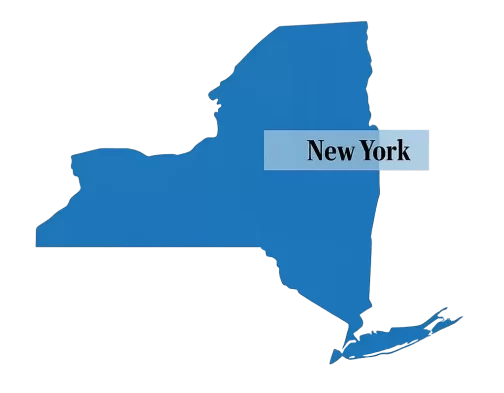A Complete Guide to Understanding Gap Insurance Gap insurance, also known as Guaranteed Asset Protection insurance, is a specific kind of coverage intended to shield car owners from monetary loss in the event that their vehicle is stolen or totaled. The standard auto insurance policy usually pays out the car’s current market value at the time of the accident when it is declared a total loss. This sum, though, might not cover the owner’s remaining balance on their auto loan or lease. In order to ensure that the owner does not have to pay out of pocket for the difference between the car’s value and the remaining amount owed on their loan or lease, gap insurance fills this financial gap. People who have financed their cars with loans or leases that exceed the depreciated value of the vehicle will especially benefit from this kind of insurance. Gap insurance can offer comfort to people who wish to prevent unforeseen financial burdens because cars lose value quickly, particularly in the first few years of ownership.
Key Takeaways
- Gap insurance is a type of insurance that covers the difference between the actual cash value of a vehicle and the amount still owed on the loan or lease.
- Gap insurance works by paying the difference between what a car is worth and what you owe on it in the event of a total loss or theft.
- Gap insurance is necessary when you owe more on your car than it is worth, have a long loan term, or made a small down payment.
- The coverage of gap insurance includes the difference between the car’s value and the amount owed, but may not cover the entire loan balance or certain fees.
- Gap insurance can be purchased through the dealership, your auto insurance provider, or a standalone gap insurance provider.
It is crucial to realize that gap insurance supplements regular auto insurance by paying the difference in value; it does not replace it. Gap insurance operates on a fairly simple principle. The primary auto insurance policy of the owner will determine the car’s current market value and make a payout based on that amount when the vehicle is involved in an accident and declared a total loss. Gap insurance kicks in to cover the remaining amount if the payout is less than what the owner still owes on their loan or lease.
Gap insurance would pay the $5,000 difference, for instance, if the owner owes $20,000 on their loan but the car is worth $15,000 at the time of loss. It is crucial to remember that gap insurance usually only covers specific kinds of losses. For example, it usually covers the entire amount of losses brought on by theft, accidents, or natural disasters. However, it might not provide coverage for things like mechanical malfunctions or damage that doesn’t lead to a complete loss. Vehicle owners thinking about getting gap insurance must thus be aware of the precise terms and conditions of the policy.
People who find themselves in particular circumstances with regard to their car financing need gap insurance more than others. For example, if someone has financed a car with a long-term loan or made a small down payment on a new car, they may be more likely to owe more than the car is worth. This situation frequently occurs for buyers who choose financing options with low down payments or who buy rapidly depreciating vehicles. In addition, gap insurance is frequently required when renting a vehicle.
| Understanding Gap Insurance: How It Works | |
|---|---|
| Definition | Gap insurance covers the difference between the actual cash value of a vehicle and the balance still owed on the financing (car loan or lease). |
| Benefit | It protects the borrower from owing money on a vehicle that has been totaled or stolen, and the insurance payout is less than the amount owed. |
| Cost | Gap insurance can be purchased from the dealership, an insurance company, or a credit union, and the cost varies depending on the provider and the value of the vehicle. |
| Eligibility | It is typically available for new and used cars, and may have certain requirements such as the age and mileage of the vehicle. |
| Duration | Gap insurance coverage may last for the duration of the loan or lease, and can be cancelled once the borrower’s equity in the vehicle increases. |
Since lessees are liable for the entire vehicle’s value until the lease term expires, the majority of lease agreements mandate that drivers carry gap insurance. Lessees may face substantial financial responsibility if an accident happens and the vehicle is totaled without gap insurance. Determining whether gap insurance is a necessary investment can therefore be aided by knowledge of one’s financial status & vehicle ownership status. It is crucial for customers to read the fine print before making a purchase because gap insurance coverage can differ greatly between providers and policies.
In general, gap insurance pays the difference between the vehicle’s actual cash value at the time of loss and the amount owed by the owner. But other benefits, like deductible coverage or, in some cases, a new car replacement, might also be included in some policies. It’s also critical to remember that not all losses are covered by gap insurance. For instance, gap insurance won’t cover a car that is damaged but not totaled. Likewise, coverage eligibility may be impacted if an owner has late payments or other unpaid debts associated with the car.
Thus, it is essential to comprehend the inclusions & exclusions of a gap insurance policy in order to make an informed choice. There are a number of places to buy gap insurance, including online retailers, insurance companies, and car dealerships. When you buy or lease a car from a dealership, gap insurance is frequently included in their financing packages. This may be convenient, but to make sure you’re getting the best deal, you should compare rates and coverage options with other providers.
As an alternative, gap insurance is available as an add-on to many conventional auto insurance providers’ plans. This choice is frequently more affordable than buying it from a dealership. Online resources also make it simple to compare various gap insurance plans & costs. When buying gap insurance, it’s important to carefully read the terms and conditions and ask questions if something is unclear, regardless of where you buy it.
The Gap Insurance Introduction. Financial security against unforeseen losses is gap insurance’s main advantage. Having gap insurance can protect you from the hefty out-of-pocket costs that could result from owing more than the value of your car in the unfortunate event that it is stolen or totaled. Drivers can enjoy their cars without worrying about possible financial consequences thanks to this peace of mind. benefits of gap insurance.
Comparing gap insurance to other forms of coverage, it is also more affordable. Although the price of gap insurance can change depending on your driving history and the make and model of your car, it usually only makes up a small portion of your total auto insurance premium. accessibility as well as affordability. Many drivers who want to protect their investments without going over budget can now afford it.
Drivers can keep their insurance premiums affordable while ensuring they are covered in the event of an unforeseen loss by including gap insurance in their policy. In conclusion. All things considered, gap insurance gives drivers financial security and peace of mind, enabling them to drive with assurance. Gap insurance is a useful supplement to any auto insurance policy because of its accessibility and affordability.
Even though gap insurance provides useful protection, prospective customers should be aware of its limitations before choosing. The fact that gap insurance normally only pays for complete losses is a major drawback; you won’t get any benefits if your car is damaged but still driveable. As a result, drivers are still required to keep collision & comprehensive insurance to guard against non-total loss situations. Also, the duration of your gap insurance policy may be limited. Some insurance companies only grant coverage for a predetermined amount of time following the purchase or lease of a car, usually until the loan balance reaches a predetermined proportion of the car’s value.
Therefore, when deciding if gap insurance is right for you, it’s critical to comprehend these limitations. Alternatives worth taking into account are available for people who might find gap insurance superfluous or too expensive. Making a bigger down payment when buying or renting a car is one choice.
By doing this, you lower the financed amount and lessen the possibility that, in the event of an accident, you will owe more than the value of your car. Consider buying a used car rather than a new one as an additional option. Relative to new cars, used cars usually depreciate more slowly, which can lessen the chance of you defaulting on your loan. Also, some drivers decide to self-insure by putting money aside in a savings account particularly for possible auto-related losses.
Finally, in today’s market, knowing gap insurance is essential for anyone financing or leasing a car. Although it has its own set of restrictions & considerations, it offers crucial protection against monetary loss brought on by depreciation. Drivers can decide on their needs for auto coverage by carefully considering these variables and looking into their options. For people looking for trustworthy home care services in New York, Rockaway Home Care provides individualized, compassionate support.
Like gap insurance, which offers financial peace of mind, Rockaway Home Care makes sure that loved ones receive high-quality care in the convenience of their own homes, freeing families to concentrate on what really counts: spending time together.
If you are considering purchasing gap insurance for your vehicle, it is important to understand how it works to ensure you are adequately protected. One related article that may be of interest is “What is Homecare?”. Just as gap insurance provides additional coverage beyond standard auto insurance, homecare services can offer extra support for seniors who may need assistance with daily tasks. Understanding the ins and outs of both gap insurance and homecare can help individuals make informed decisions about their financial and healthcare needs.




